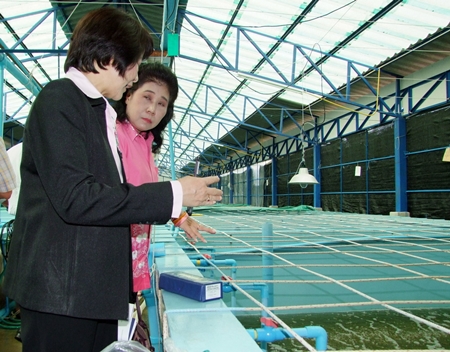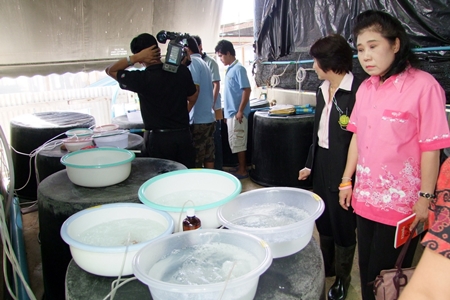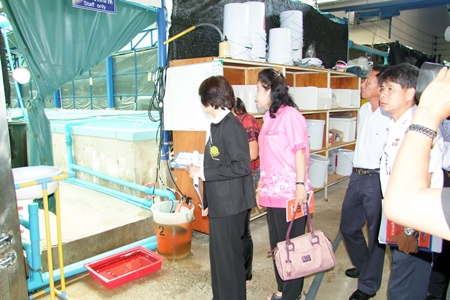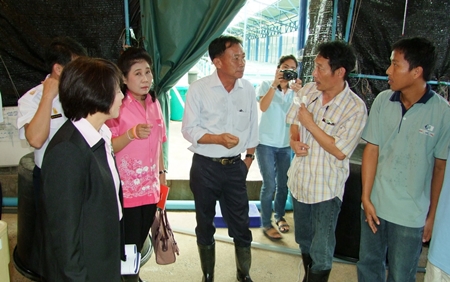Hoping to stamp out a bacterial disease sweeping through Southeast Asia, Chonburi agricultural officials inspected shrimp farms in Pattaya and Plutaluang for signs of Early Mortality Syndrome.
Ju-adee Pongmareerat, inspector with the Chonburi office of the Ministry of Agriculture and Cooperatives’ Fishing Department, and Supol Tansuan, director of the Chonburi Coastal Aquatic Feed Research Institute, took samples and screened facilities at Plutaluang Water Aquaculture and Charoen Pokphand Foods PCL in Pattaya June 3.
 Chonburi agriculture officials inspect local shrimp farms for disease.
Chonburi agriculture officials inspect local shrimp farms for disease.
The inspections are part of the ministry’s nationwide “Empower to Suppress EMS” campaign, which is inspecting shrimp farms in 10 provinces. Officials are imposing new standards on sanitization of air systems and water wells and checking that breeding stock is EMS free.
Technically known as acute hepatopancreatic necrosis syndrome, Early Mortality Syndrome is caused by a bacterial agent that is transmitted orally and colonizes the shrimp gastrointestinal tract, producing a toxin that causes tissue destruction and dysfunction of the shrimp digestive organ.
The pathogen responsible was unknown until early this year. Researchers at the University of Arizona in the United States identified the agent as a unique strain of a relatively common bacterium, Vibrio parahaemolyticus, that is infected by a virus causing EMS. The same bacterium, when infected by a different viral phage, is responsible for deadly cholera in humans.
Since EMS was first reported in China in 2009, it has spread to Vietnam, Malaysia and Thailand, and now causes annual losses more than $1 billion. EMS outbreaks typically occur within the first 30 days after stocking a newly prepared shrimp pond, and mortality can exceed 70 percent.
The results of the inspection have not yet been made public.







